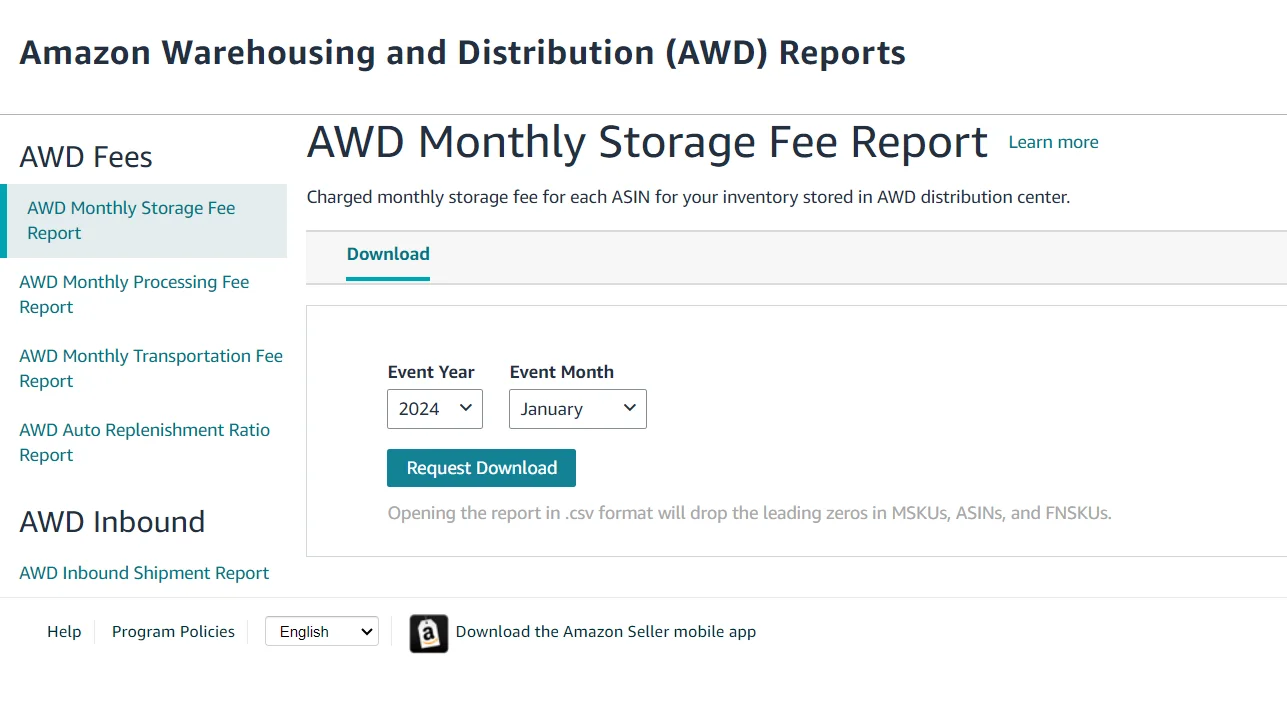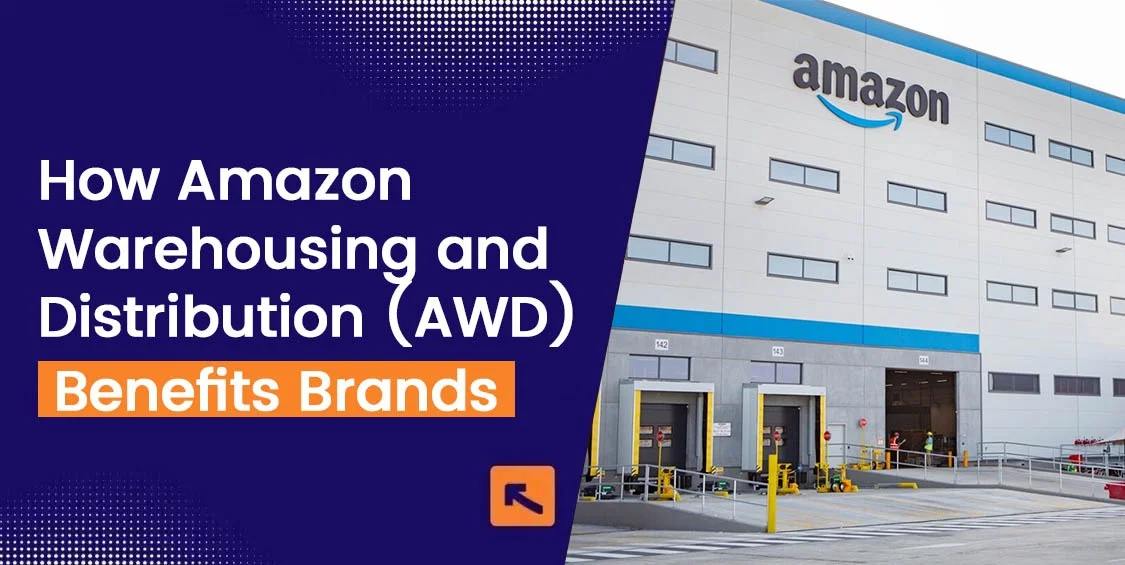Managing logistics and inventory on Amazon can be a daunting task, especially when scaling your business to eight figures. If you’re finding it challenging to balance efficiency with cost, Amazon Warehousing and Distribution (AWD) might be the solution you need. It offers a streamlined approach to inventory and distribution, significantly benefiting your brand by integrating seamlessly with Amazon’s Seller Central tools.
What is Amazon Warehousing and Distribution (AWD)?
Amazon Warehousing and Distribution (AWD) is a service designed to help third-party (3P) sellers manage their inventory more effectively by utilizing Amazon’s extensive fulfillment network. It enables sellers to store products in Amazon’s strategically located warehouses, manage inventory through Seller Central, and distribute products efficiently, either directly to consumers via Fulfillment by Amazon (FBA) or through other retail channels.
Features of Amazon Warehousing and Distribution (AWD)
Amazon Warehousing and Distribution (AWD) is equipped with a range of features designed to simplify your logistics and inventory management. By leveraging these tools, you can ensure that your products are always in the right place at the right time.
Here’s a closer look at how these features can benefit your brand:

- Send and Track Inventory Shipments: AWD allows you to efficiently send and track inventory shipments to Amazon distribution centers, ensuring that your products are always positioned where they are most needed, minimizing delays and optimizing fulfillment efficiency.
- View Inventory in Storage: AWD provides real-time insights into your inventory stored in Amazon’s distribution centers, helping you manage stock levels more effectively.
- Move SKUs to Amazon and Non-Amazon Destinations: This feature offers flexibility by allowing you to move SKUs from Amazon distribution centers to other retail destinations, making it ideal for multi-channel sellers.
- Track Shipments to Fulfillment Centers: AWD enables you to track the replenishment of inventory from Amazon distribution centers to fulfillment centers, ensuring your stock is always available to meet customer demand without unnecessary delays.
How AWD Benefits Amazon Brands
1. Streamlined Logistics with Seller Central Tools
AWD simplifies logistics by centralizing your inventory in Amazon’s network, managed through Seller Central. You can use tools like the Inventory Ledger and Multi-Channel Fulfillment reports to track and manage inventory more efficiently, ensuring products are where they need to be.
Example: By using AWD in conjunction with Seller Central’s Restock Inventory tool, you can better manage your supply chain, reducing time spent on logistics and focusing more on growing your brand.
2. Reduced Shipping Costs and Better Fulfillment
Shipping is one of the largest expenses for brands, especially if you don’t have the volume to negotiate lower rates. With AWD, your products are stored closer to your customers, which helps reduce shipping distances and costs. You can track and optimize these savings using the FBA Inventory Reports in Seller Central, which provide insights into your storage and fulfillment costs.
Tip: Regularly review your Stranded Inventory and Reserved Inventory reports in Seller Central to ensure that your products are in the right place at the right time, avoiding unnecessary storage fees and ensuring faster delivery to customers.
3. Faster Delivery with Optimized Inventory Placement
E-commerce is all about speed. Customers expect fast delivery, and delays can hurt your reputation. AWD helps you meet these expectations by placing your inventory in locations that allow for quicker shipping times. You can use the Inventory Performance Dashboard in Seller Central to monitor how effectively your inventory is being managed and adjust your strategy accordingly.
Tip: Faster delivery can lead to better customer satisfaction and higher conversion rates. AWD, combined with Seller Central’s Fulfillment Reports, gives you the tools to monitor and improve your delivery speeds.
4. Enhanced Inventory Management with Real-Time Data
Managing inventory can be complex, particularly during peak seasons. AWD provides real-time data through Seller Central’s Inventory Planning tools, which help you track stock levels, monitor demand, and avoid costly stock outs or overages.
Tip: Use Seller Central’s Subscribe & Save forecasting to plan for high-demand periods. This tool provides insights into customer purchasing trends, helping you ensure that you always have enough stock to meet demand without overcommitting resources.
5. Scalability Without the Overhead
As your brand grows, so do your logistics needs. AWD offers the scalability to grow with your business without the overhead of managing additional warehouses or logistics providers. With the Sales and Traffic Reports available in Seller Central, you can monitor how your sales are trending and scale your inventory accordingly without the risk of overextending your resources.
Essential AWD Reports for Effective Inventory and Cost Management
Amazon Warehousing and Distribution (AWD) offers several key reports that are crucial for managing your inventory and keeping costs under control. Below are two of the most important reports that every seller should regularly review:
1. AWD Monthly Storage Fee Report
The AWD Monthly Storage Fee Report provides a detailed breakdown of the monthly storage fees associated with each ASIN stored in Amazon’s distribution centers. This report is indispensable for brands who need to monitor and optimize their storage costs. By reviewing this report, you can:

Identify High-Storage Cost Items: See which products are incurring the most storage fees and consider strategies to reduce these costs, such as running promotions to move slow-selling items.
- Optimize Inventory Levels: Use the insights from this report to adjust your inventory management strategies, ensuring that products are not sitting in storage longer than necessary.
Regularly checking this report helps you maintain a lean inventory, reduce unnecessary storage costs, and improve your overall profitability.
2. AWD Inbound Shipment Report
The AWD Inbound Shipment Report is another critical tool that provides insights into the shipments arriving at Amazon’s distribution centers. This report includes:

- Shipment Tracking: Track the status of all inbound shipments, ensuring that your inventory arrives on time and is available for fulfillment as soon as possible.
- Visibility Over Inventory Movement: Monitor the movement of your products from the moment they leave your warehouse until they reach Amazon’s distribution centers.
By using the AWD Inbound Shipment Report, you can prevent delays, maintain accurate inventory records, and ensure a smooth supply chain operation.
Together, these reports offer comprehensive insights that help you manage your inventory more effectively, control costs, and keep your Amazon operations running smoothly.
AWD vs. Traditional Warehousing
Both Amazon Warehousing and Distribution (AWD) and Third-Party Logistics (3PL) providers offer valuable options for 8-figure sellers. AWD is ideal for seamless integration with Amazon, offering a flexible, pay-as-you-go model that easily adapts to market changes.
In contrast, 3PLs provide more tailored logistics solutions, often better for multi-channel distribution, though they may involve higher costs and longer contracts. Your choice depends on whether you prioritize integration with Amazon or need specialized logistics across various channels.
| Aspect | Third-Party Logistics (3PL) | Amazon Warehousing & Distribution (AWD) |
| Commitment | Often requires long-term contracts or agreements. | No long-term commitment; operates on a pay-as-you-go model. |
| Scalability | Scalability depends on the 3PL provider and may require advance planning. | Easily scalable; seamlessly adapts to your business growth needs. |
| Overhead Costs | Potentially high due to external management, staffing, and variable service fees. | Lower overhead, managed entirely through Amazon Seller Central. |
| Flexibility | Flexibility varies by provider; changes may involve renegotiation and additional costs. | Highly flexible; easily adjust inventory and distribution through Amazon’s platform. |
| Management | Requires coordination with an external provider; hands-on management of logistics. | Fully integrated with Amazon’s ecosystem; managed through Seller Central. |
| Security Concerns | Security protocols depend on the 3PL provider; varies by facility. | Security is managed by Amazon as part of their comprehensive service. |
How Brands Can Maximize Benefits of AWD?
- Integrate AWD with FBA: If you’re using FBA, AWD can streamline your logistics even further. Use the Restock Inventory tool in Seller Central to keep your stock levels optimal without overstocking.
- Leverage Data from Inventory Reports: Seller Central offers a range of reports that provide deep insights into your inventory management. Regularly review your Inventory Ledger and Stranded Inventory reports to keep your inventory in check.
- Prepare for Peak Seasons: Use Seller Central’s forecasting tools, such as Subscribe & Save Forecasting, to prepare for peak shopping periods like Q4. This helps ensure that your inventory is always ready to meet customer demand.
Conclusion
Amazon Warehousing and Distribution (AWD) is not just a logistics solution—it’s a strategic asset that can propel your brand to new heights. By integrating AWD with Seller Central’s tools, you can optimize operations, reduce costs, and drive growth. Contact AMZDudes today to discover how we can help you leverage AWD for maximum impact.
Whether you’re looking to optimize your existing logistics or preparing for rapid growth, AWD offers the flexibility and resources you need to stay competitive. Partnering with e-commerce specialists like AMZDudes can further amplify these benefits, helping you navigate the complexities of the Amazon marketplace with confidence.
Ready to elevate your Amazon business? Explore how Amazon Warehousing and Distribution can streamline your operations and support your brand’s growth.




